Why you may be struggling to lose weight from cycling
If the scales aren’t budging no matter how much you ride, we have some tips for you.
James Howell-Jones
Junior Writer
Whether you’re looking to lose weight to improve your performance on the hills or just for health reasons, cycling is a fantastic way to do it. But losing weight can be a challenge – you might find that no matter how much you’re riding, the scales just aren’t budging. So what’s going wrong?
The first thing to understand is that you can’t out-train a bad diet. No matter how much exercise you do, you can’t just eat whatever you want. Even if you're doing 12 hours of riding a week, it takes depressingly few cookies, chocolates, pastries, paninis and beers to offset all of that good work.
On the basis that you don’t have an underlying health condition, losing weight comes down to some pretty simple mathematics: your total energy expenditure needs to be greater than the energy you consume. In other words, the total number of calories that you burn needs to be more than the calories that you eat.
But the fact is, it’s surprisingly easy to end up eating more calories than you burn, even on an active day.
In this guide, we'll demonstrate how easy it is to get your calorie intake and expenditure out of balance, and talk about how to get it in check. Follow these tips and your weight loss journey will be back on track.
Read more:
- GCN Show: Does cycling actually help you lose weight?
- How to use Zwift and a smart trainer to lose weight
- 6 tips to build your fitness from scratch
Consuming more than you burn; an example
Let's demonstrate how easy it is to consume more calories than you burn with an example of a typical Sunday for most cyclists:
It’s Sunday, and GCN’s Ollie Bridgewood is going for a club ride.
He starts the day with a bowl of porridge (400 calories), a couple of slices of toast (250 calories), a coffee and a glass of juice (150 calories).
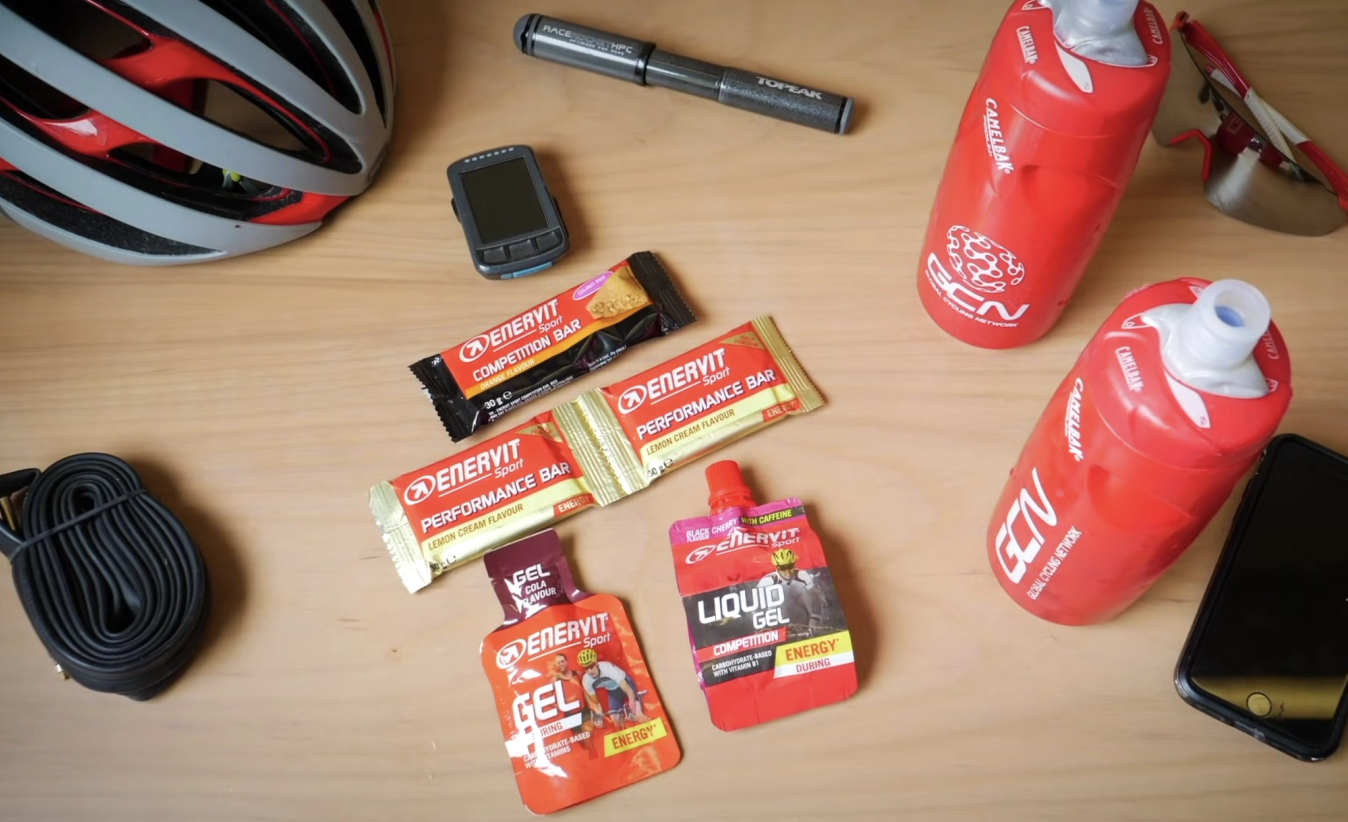
© GCN
Fuelling for a ride
Whilst riding, he has an isotonic energy drink (380 calories), a couple of sports nutrition bars (400 calories) and a couple of gels (200 calories).
And, naturally, he stops at a cafe for a big, filled pastry (450 calories) and a flat white (100 calories).
The ride burns 2,000 calories, and while riding, he’s consumed 1,530 calories.
Back at home, he has a recovery smoothie (300 calories), then grazes on some mixed nuts and fruit through the afternoon (300 calories).
And since it's a Sunday, he tucks into a roast dinner (850 calories), plus a glass or two of red wine (120 calories). Finally, there’s dessert (400 calories).
All told, he’s consumed 4,300 calories throughout the day. But how much did he burn?
First of all, there’s Ollie’s basic caloric demands, which use up 2,300 calories a day. Then, there’s the ride, during which he burnt 2,000 calories. So, even with that long bike ride, Ollie only just burnt the calories he consumed that day. With a few extra snacks here and there, it really wouldn’t be difficult for him to eat more than he burnt, even on an active day like this one.
How to introduce a calorie deficit
If that example sounds familiar to you, then you may need to reconsider your fuelling strategy. To lose half a kilogram or just over a pound of weight a week (a good, sustainable weight loss target), you’ll need a caloric deficit of 3,850 calories per week, meaning about 550 calories a day.
So what could Ollie change to achieve that target? Perhaps he could cut out that filled pastry or the pudding, and maybe spare the odd gel or have less of that isotonic energy drink. Or, he could choose a black coffee instead of his flat white, and have a slightly smaller dinner. With a couple of changes, he could easily achieve a 550-calorie deficit while still fuelling for the ride.
Still not progressing?
What if you've been tracking your food intake and you think you've been hitting that calorie deficit, but when you step on the scales, they don't seem to budge? There could be a number of things happening, but the most likely culprit is the accuracy of your calorie burn calculation. Here’s what you can do to fix that.
Work out your basal metabolic rate
To be able to work out if you're in a calorie deficit, you need to know your calorie expenditure and your caloric demands for the day. And the first thing to consider is what's called your basal metabolic rate. This is the number of calories that you use to just perform basic functions and stay alive. So breathing, sleeping, digesting food, moving around. This varies from person to person. The most scientific way to do this is to go to a lab and have your basal metabolic rate measured, although realistically most of us aren't going to be able to do this. However, there are various tools online that you can use to estimate and calculate it. In my experience, these are pretty accurate. Just search for a metabolic rate calculator and plug in your numbers.
Measure calories burnt
The next step is to measure the calories you burn while riding, and there are three popular ways to do this: fitness tracking apps, heart rate monitors, and power metres, but some methods are more reliable than others. Let’s look at Ollie’s 2,000-calorie Sunday ride and see how different devices measure the calories differently
1. Apps
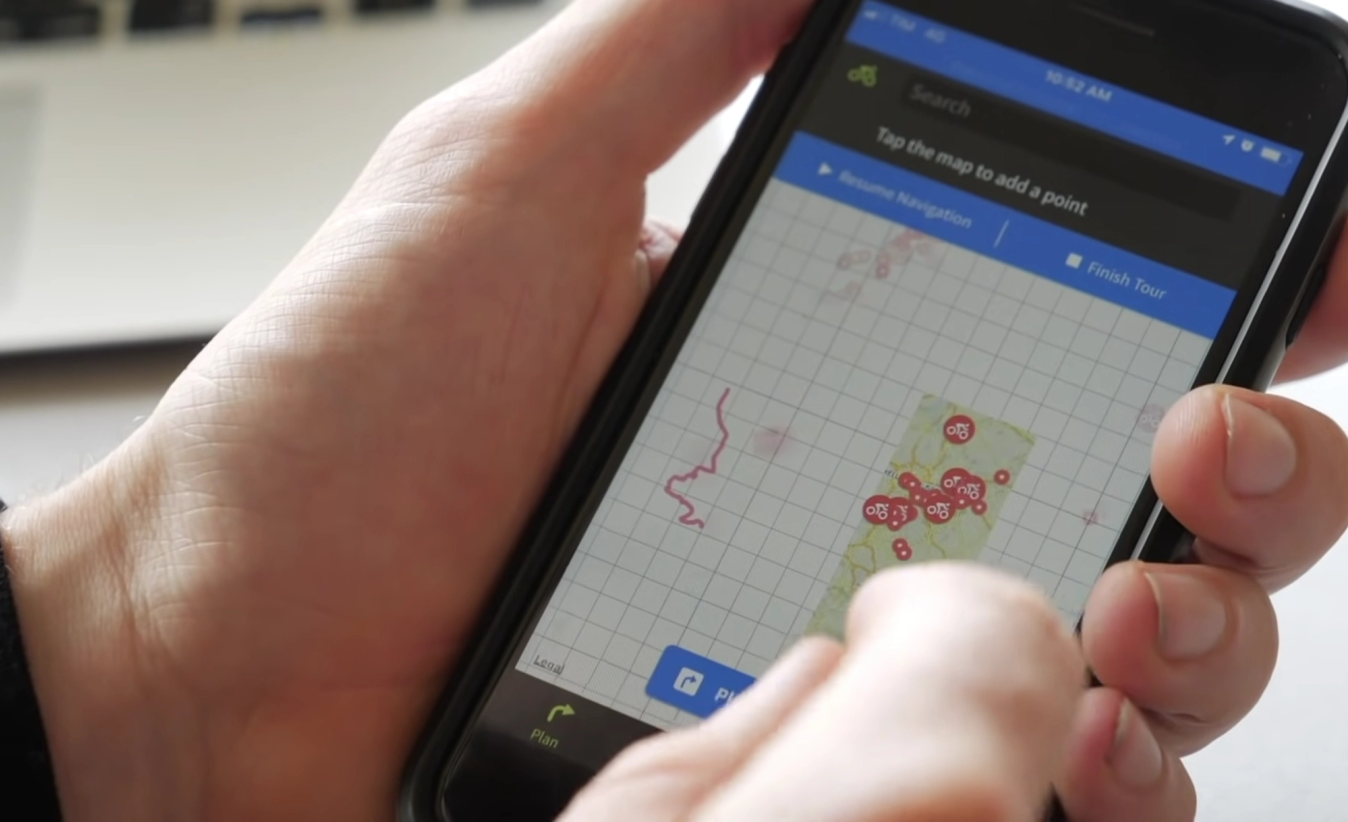
© GCN
Fitness apps can estimate calorie burn
Firstly, let's look at apps. If you use a fitness tracking app such as Komoot or Strava but you don't pair it with any additional sensors, this is the least accurate way to measure your calorie expenditure. Apps like this take a number of metrics, including the type of activity, how far you went, how fast you went, and the elevation you gained, and estimate the calorie burn. That estimation is typically between 20% to 60% accurate, meaning that you could end up overeating anywhere between 800 and 3,200 calories for our 2,000-calorie ride example, which will scupper any attempts at weight loss.
2. Heart rate monitors
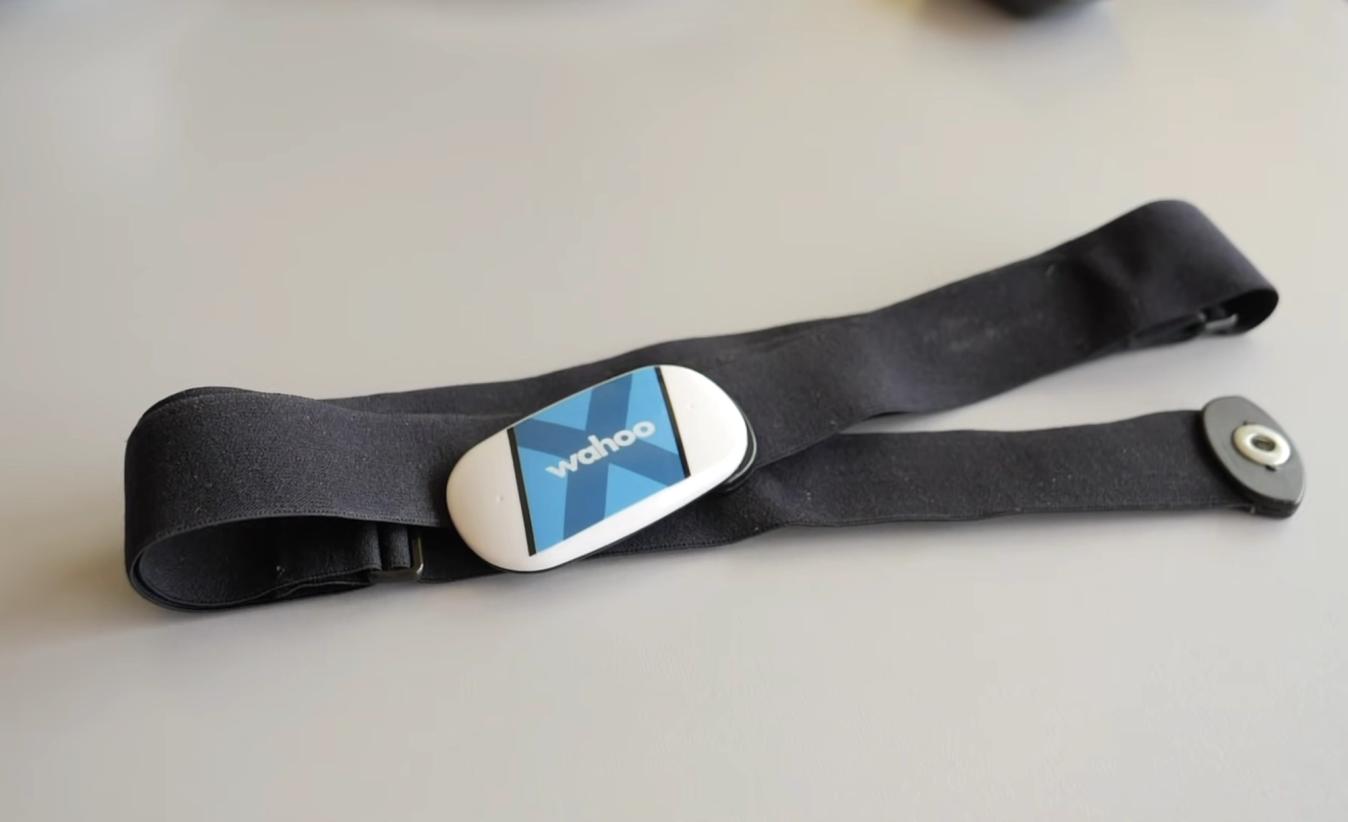
© GCN
Heart rate monitors can give good calorie burn estimates
If you wear a heart rate monitor, you can expect much higher accuracy – typically you’ll be within 10 to 20% of the true figure. So with a heart rate strap, you might measure anywhere between 1,600 and 2,400 calories for that 2,000-calorie ride.
3. Power meters
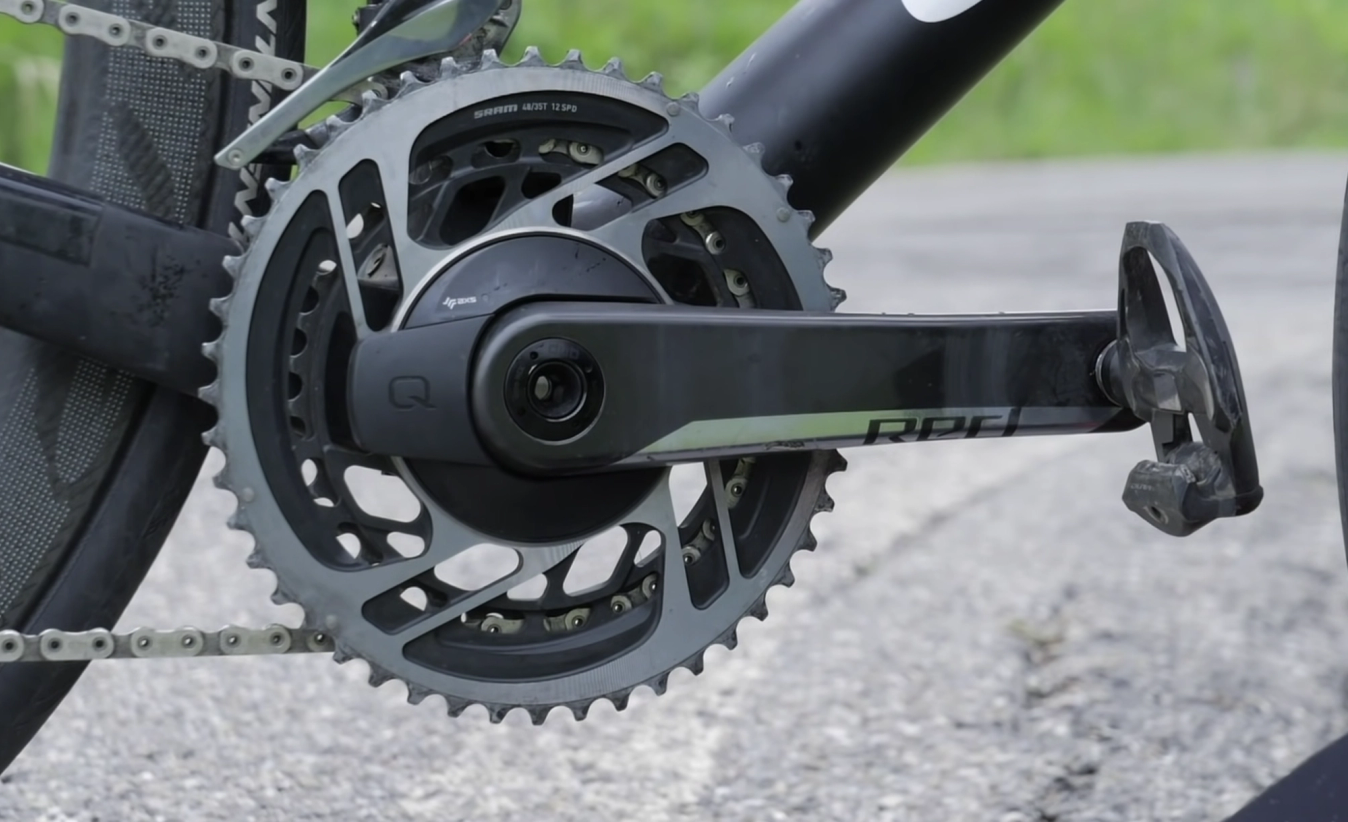
© GCN
Power meters accurately measure calorie burn
The most accurate way of measuring calorie burn is with a power meter, which will typically be accurate within a 5% margin of error. This is because they literally measure the energy produced by you to turn the cranks of the bike, and they even take into account the inefficiency of humans at converting fuel into movement, and then display your calorie reading on a head unit.
Measure your calories consumed
How you measure isn't the only potential source of inaccuracy. Food labels are only required to be 20% accurate, meaning there’s even further scope for getting an inaccurate wrong result, even if you calculate perfectly with the numbers you’re given. This is a tricky one to tackle, and ultimately you just have to do your best with the information you’ve got.
Don’t overcompensate for this potential error by restricting your food intake too heavily, and be especially careful when restricting your intake of carbohydrates. Restricting carbs too severely can cause you to dip into a state of relative energy deficiency (RED-S), and this is linked to suppression of the immune system, hampered performance, lower bone density, and disrupted periods in women. It can also result in your body going into a starvation state and holding on to its fat reserves and sacrificing lean tissue, which definitely isn't what you want, whether you’re a cyclist or not.
This doesn't mean that tracking calories is a waste of time. Just be aware of its limitations and perhaps use some trial and error to work out what works best for you.
Don’t trust your scales
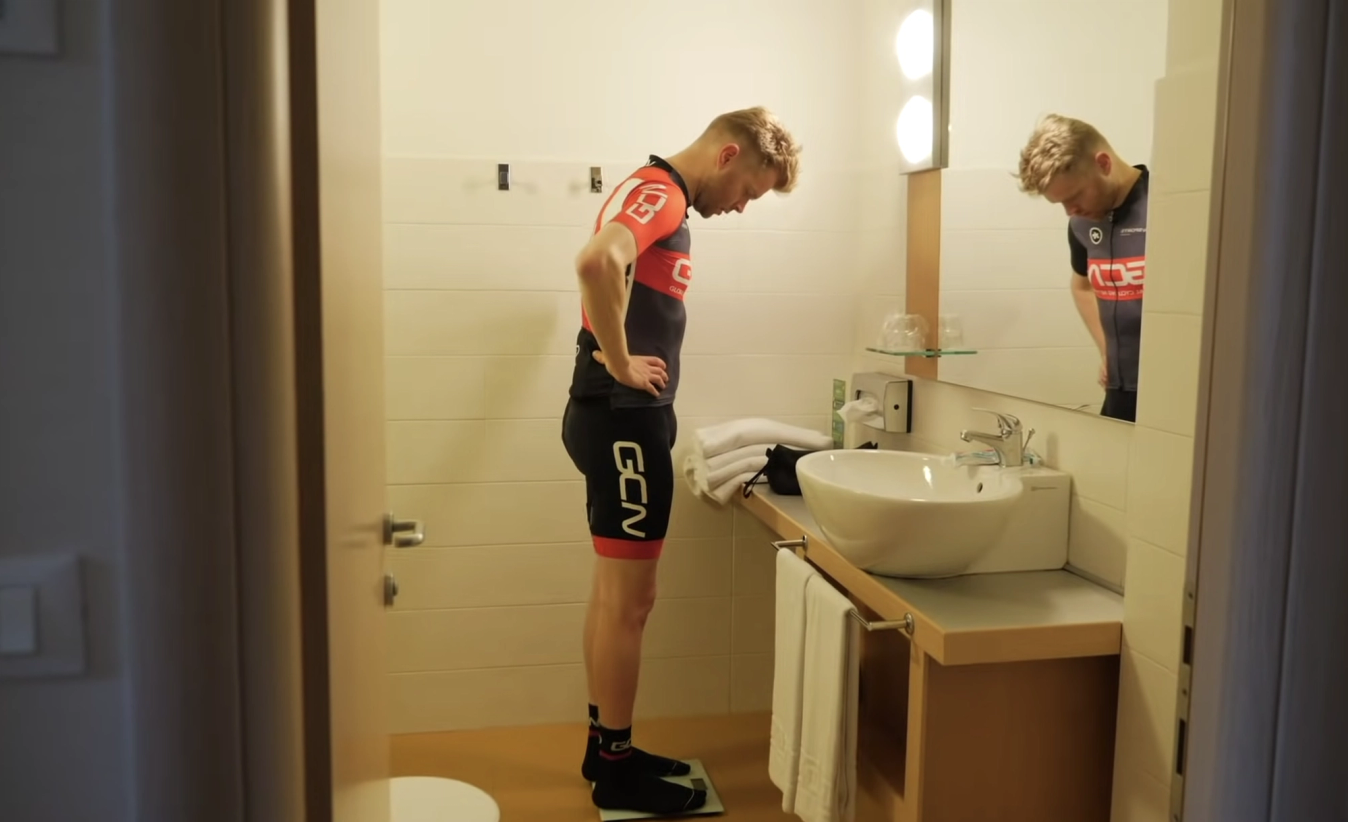
© GCN
Don't despair if your scales aren't showing progress
There are so many factors that affect the magic number when you step on the scales, so don’t beat yourself up if you’re not always getting lighter. Your weight will vary by a kilo or a couple of pounds day to day, mainly because of water retention, but also because of the time of day, your eating schedule, and many other variables. Eating salty foods will make you heavier, as your cells will absorb more water. So if you eat a lot of salty food one day, it’s perfectly conceivable that the next day you’ll weigh a kilo or two pounds more than usual.
Similarly, high-fibre foods result in lots of residue in the gut and colon, meaning extra water retention, and extra weight. This isn’t a reason to cut out these kinds of foods – fermentable carbohydrates (FODMAPs) and high-fibre foods are essential for good gut health, which is essential for good all-round health. But it’s something to bear in mind if the scales aren’t being friendly, it doesn’t necessarily mean you’re gaining weight in the long-term.
Another thing to be aware of is carbohydrates. Carbohydrates are converted in your body into glycogen, and for every one gram of glycogen stored in your muscles and cells, it combines with at least three grams of water, meaning that if you carb-load before an important event (something you absolutely should do), you can weigh significantly more afterwards, again down to water retention. Conversely, this means that low-carb diets can misleadingly give overnight weight loss results for the same reason.
The key thing to be aware of is that water retention and increased residue in the gut are temporary, so if you weigh yourself every day, then don't be too worried about the daily fluctuations on the scales. What you should be more concerned about is the longer-term trend that you observe on the scales. And if you are going to weigh yourself daily, we'd suggest being consistent with it, so do it at the same time every day.
Another thing to be aware of is that if you've gone from being relatively inactive to exercising lots, then you're probably burning fat, but you're also probably putting on some muscle – and remember that muscle weighs more than fat, so it can appear that the scales aren’t budging even though you're getting leaner.
Apps and trackers
There are loads of apps and fitness trackers out there that make recording your progress easy. You’ll be able to plot your weight-loss goals over time, record what you’ve eaten and how many calories you’ve burned, and observe what works for you.
They’re also good at teaching you which foods are the most calorie dense, so you can avoid them. Or avoid them most of the time, at least.
Fuel your training
Training days aren’t the best days to cut loads of calories, especially if you’re trying to improve your fitness on the bike. Without the right fuel, you won’t get the most out of your sessions. Instead, focus on lower-intensity days when increasing your calorie deficit.
Eat healthily
As well as managing your calorie deficit, it’s important to pay attention to what kind of foods you’re eating. Some general pointers are to eat a balanced and varied diet (because different foods provide you with different micronutrients), avoid junk food, eat as much non-processed food as possible, and eat plenty of fresh fruit and vegetables.
Remember, healthy food can still be calorie-rich
It’s easy to assume that if you’re eating nutrient-rich foods, like nuts, seeds, avocados, fruit, vegetables and olive oil, you’ll automatically be getting the right amount of calories. These foods are indeed healthy, and contain loads of micronutrients, but they still contain calories. In fact, some, like nuts and avocados, are very calorie-dense. So eat too much of them, and your calorie deficit will quickly disappear.
Pick your battles

© GCN
A mid-ride slice of cake is hard to resist
One last thing: we all have our favourite things, and these are rarely healthy. But if you deprive yourself of all the foods you love, you’re going to struggle to keep up your low-calorie diet. Let yourself have the odd treat, to stay sane and happy. It’ll make your new, healthy diet that bit easier, and keep you eating in a disciplined way for longer. And that’s what weight loss is all about: sustainability and longevity.
Let's digest
Losing weight is made to sound really complicated, but in reality, it’s a simple matter of burning more calories than you consume. By paying attention to your diet and your exercise habits, you can take the guesswork out of the process, and begin a steady, sustainable weight loss journey. With more healthy foods, in the right quantities (plus the odd treat here and there), you’ll start to see the benefit. Just try and be as accurate as possible, stick to a sensible deficit, and your scale number should go down.
For more fitness and weight loss information and advice, see our fitness section. For training sessions, see our training library.











